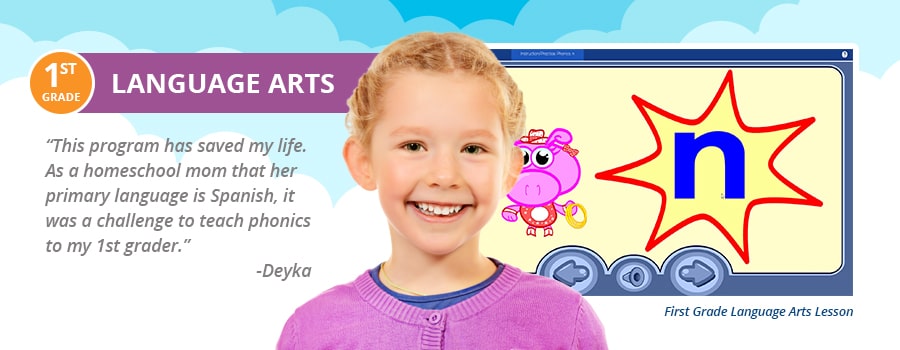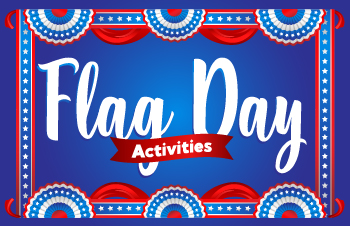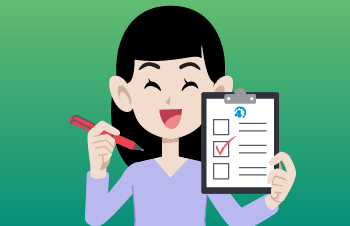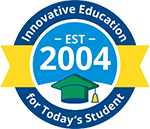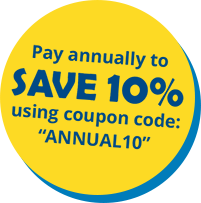First Grade Language Arts Homeschool Curriculum
A child’s first grade language arts education is of the utmost importance for a number of reasons. During this year, students will be introduced to a number of foundational concepts and learn a vast array of crucial skills that will pave the way for the reading and writing that they will continue to build on for years to come.
A first grade language arts curriculum should cover several topics, all with the shared goal of building and improving communication skills. This is accomplished by teaching topics such as phonics, reading, reading comprehension, writing, grammar, vocabulary, and spelling.
First Grade Language Arts Concepts
In 1st grade students should start understanding and using new words throughout the year. A typical course of study for 1st grade language arts will include will include a number of language arts concepts such as:
- The alphabet – Students should be able to recite the alphabet, recognize all the letters, and know the sounds they make.
- Pre-reading – Students should be familiar with the parts of a book, as well as the roles of an author and illustrator; blend sounds, such as consonant-vowel-consonant combinations; be able to read the kindergarten sight/Dolch words.
- Writing – Students should be able to write all the letters of the alphabet in lower- and upper-case; write their first and last name; spell shorter words correctly, and longer words phonetically.
The ideal first grade language arts curriculum should ensure mastery of these concepts and skills for your student. Read on to find out how we can help your student master these crucial concepts, what’s included, and what you can expect your child to learn with our award-winning curriculum.
First Grade Reading Goals/Objectives
Reading is a big part of first grade. As your child begins to broaden their reading skills, you’ll notice that they’ll begin to read words everywhere they go and relish in their newly developed skill. It’s important that you read to your child, and vice versa, on a daily basis to help them develop their literacy skills even further. A comprehensive and effective first grade language arts curriculum will help your child accomplish the following goals and objectives:
- Increase vocabulary as they blend consonant sounds, vowel and consonant digraphs, and more.
- Read simple stories fluently and independently.
- Retell the main idea of a story and answer questions about the text.
- Identify parts of a story or book.
- Know the names and sounds of all the consonants and vowels.
- Understand phonics concepts such as consonant combinations.
- Develop an understanding of composition.
- Learn more about the Time4Learning homeschool reading curriculum and discover the steps students should take in order to be fluent, proficient readers.
Learn more about the Time4Learning homeschool reading curriculum and discover the steps students should take in order to be fluent, proficient readers.
Writing Goals/Objectives
In first grade, students begin to learn how to organize their thoughts in order to write sentences that are coherent, while also taking into account a number of factors such as those listed below. They’ll learn that paragraphs should have a beginning, middle and end. And although spelling skills may not be fully mastered, using ‘invented’ spelling means that students are understanding letter sounds and spelling things as they hear them when they sound them out.
Below are a few objectives that first graders should be able to master.
- Write from top to bottom, left to right while using spacing between words.
- Correctly write 3- 4-letter words and longer words phonetically.
- Write simple sentences and short stories or paragraphs in chronological order.
Grammar Goals/Objectives
Grammar and writing go hand in hand. Without proper grammar skills, students won’t be able to form complete, coherent sentences. In addition to the objectives listed below, using the proper subject-verb agreement, verb tenses, and correct punctuation are just some of the goals first graders should work toward.
- Use correct capitalization and punctuation.
- Understand and identify the parts of speech and types of sentences.
- Identify compound words and distinguish between proper and possessive nouns.
Time4Learning’s First Grade Language Arts Lesson Plans
The student will demonstrate knowledge of the letters m, r, h, s, d, t and their sounds and the letter a and its short sound. The student will also demonstrate knowledge of three high frequency words. This is accomplished through a series of phonemic awareness, phonics, high frequency, and reading activities that incorporate explicit instruction and application.
The student will demonstrate knowledge of the letters p, z, k, the letter combination qu and their sounds, and the letter i and its short sound. The student will also demonstrate knowledge of three high frequency words. This is accomplished through a series of phonemic awareness, phonics, high frequency, and reading activities that incorporate explicit instruction and application.
The student will demonstrate knowledge of the letters v, j, w, n, y and their sounds, and the letter e and its short sound. The student will also demonstrate knowledge of three high frequency words. This is accomplished through a series of phonemic awareness, phonics, high frequency, and reading activities that incorporate explicit instruction and application.
Recognize likenesses and differences between pairs of items.
Sort objects by appearance (e.g., color, size, and shape). Recognize items that are the same and different. Extend and identify a repeating pattern.
Sort representations of living things by appearance. Create items with given attributes. Recognize one-to-one correspondence.
Align sorted objects to determine whether a one-to-one match exists. Determine which set has more or fewer members when a one-to-one match does not exist. Create and interpret picture-graph displays.
Copy, continue, and complete patterns involving two attributes.
Chapter Test: under the Sea
Use positional words to describe vertical and horizontal relationships. Recognize that more than one term may be appropriately used to describe a positional relationship. Create a positional relationship by following directions.
Use positional words to direct investigations that occur in different locations. Use positional words to describe locations.
Recognize that vertical and horizontal relationships are often determined by point of view. Recognize that individual items may each appear different from different perspectives.
Investigate the features of a circle, triangle, square, and rectangle, and identify their presence in contextual settings. Identify likenesses and differences between pairs of shapes. Construct shapes.
Analyze, compare, create, and compose two- and three-dimensional shapes, in different sizes and orientations, using informal language to describe their similarities, differences, parts, and other attributes.
Construct and/or complete simple scenes formed with plane figures. Construct, complete, and describe patterns formed with plane figures.
Chapter Test: Playtime in the Park
Recognize that objects can be counted and represented by numerals. Recognize that cardinal numbers represent a quantity (numbers 1-5). Read and represent numbers 1-5. Recognize that different arrangements represent the same quantity (numbers 1-5).
Compare groups to determine more/greater/less/fewer. Use one-to-one correspondence when comparing sets. Recognize the concept of zero as representing an empty set. Construct and interpret picture graphs.
Recognize that objects can be counted and represented by numerals (0-20). Recognize that cardinal numbers represent a quantity (numbers 0-20). Read, write, and represent numbers 0-20. Recognize that different arrangements represent the same quantity (numbers 0-20).
Use one-to-one correspondence to represent and compare quantities of 0-10. Use tally charts and picture graphs to represent 0-10. Recognize sequence of numbers on a number line. Describe position in a sequence of whole numbers on a number line up to 10.
Recognize that larger numbers are formed from combinations of smaller numbers. Explore addition models. Recognize that smaller numbers are formed by taking apart sets. Informally explore subtraction models.
Chapter Test: Let’s Go On a Safari
Use a calendar as a tool to identify months, days, and dates. Use a calendar as a tool to identify today, yesterday, and tomorrow. Identify parts of a day (morning, afternoon, evening). Use an analog clock to identify time to the nearest hour. Use a digital clock to identify time to the nearest hour. Order events in a sequence. Identify temperature using a thermometer.
Identify penny, nickel, dime, quarter. Identify value of penny, nickel, dime, quarter. Combine coins to make values up to 10 cents.
Compare the length of objects. Identify and correct common errors in linear measurement. Estimate and measure length using nonstandard units. Measure length using standard units.
Separate items into equal parts through an active comparison of their length. Informally explore commonly used fractional parts of a whole (fourths, thirds, halves).
Compare the weight of objects. Compare the capacity of objects. Recognize tools of measurement. Informally explore the concept of area.
Use a calendar as a tool to identify months, days, and dates. Use a calendar as a tool to identify today, yesterday, and tomorrow. Identify parts of a day (morning, afternoon, evening). Use an analog clock to identify time to the nearest hour. Use a digital clock to identify time to the nearest hour. Order events in a sequence. Identify temperature using a thermometer. Identify penny, nickel, dime, quarter. Identify value of penny, nickel, dime, quarter. Combine coins to make values up to ten cents. Compare the length of objects. Identify and correct common errors in linear measurement. Estimate and measure length using nonstandard units. Measure length using standard units. Separate items into equal parts through an active comparison of their length. Informally explore commonly used fractional parts of a whole (quarters, thirds, halves). Compare the weight of objects. Compare the capacity of objects. Recognize tools of measurement. Informally explore the concept of area.
Chapter Test: What’s Cooking?
Through a series of pre-reading, reading, and comprehension activities that incorporate discovery learning and direct teaching, the student will learn new vocabulary, develop fluency, and develop reading comprehension skills. The student will demonstrate comprehension by sequencing events from a story and by associating concepts of taller and shorter with their meanings.
Through a series of phonemic awareness, phonological awareness, phonics, reading, and prewriting activities that incorporate discovery, recognition, and application, the student will demonstrate understanding of the letters l and n and their sounds.
Through a series of phonological and phonemic awareness activities that incorporate recognition and application, the student will demonstrate understanding of the sound of the letters m, d, s, p, l, n and the short sounds of the letters a and i.
Through a series of phonics activities that incorporate recognition and application, the student will demonstrate understanding of the letters m, d, s, p, l, n and their sounds and the letters a and i and their short sounds. Select Type Learning Paths Description.
Through a series of connected activities that incorporate discovery learning and direct teaching, the student will learn new vocabulary, develop fluency, and develop reading comprehension skills. The student will gain a deep understanding of the words “practice” and “cool”, learn about nuances in word meaning, and demonstrate comprehension by answering questions about reading for a purpose and by discriminating patterns.
Through a series of phonemic awareness, phonics, reading, and prewriting activities that incorporate discovery, recognition, and application, the student will demonstrate understanding of the letters t and h and their sounds.
Through a series of pre-reading, reading, and comprehension activities that incorporate discovery learning and direct teaching, the student will develop fluency and reading comprehension skills. The student will demonstrate comprehension by matching pictures with sentences and by associating familiar words (in and out) with their meanings.
Through a series of phonemic awareness, phonics, reading, and prewriting activities that incorporate discovery, recognition, and application, the student will demonstrate understanding of the letter o and its short sound and the letter b and its sound.
Through a series of pre-reading, reading, and comprehension activities that incorporate discovery learning and direct teaching, the student will develop fluency and reading comprehension skills. The student will demonstrate comprehension by recalling details and matching pictures with the correct verb tense.
Through a series of phonological awareness, phonemic awareness, phonics, reading, and prewriting activities that incorporate discovery, recognition, and application, the student will demonstrate understanding of the letter e and its short sound and the letter r and its sound.
Through a series of connected activities that incorporate discovery learning and direct teaching, the student will develop fluency and reading comprehension skills. The student will gain an understanding of nuances in word meaning and demonstrate comprehension by matching pictures with sentences and by grouping objects according to their function.
Through a series of phonemic awareness, phonics, reading, and prewriting activities that incorporate discovery, recognition, and application, the student will demonstrate understanding of the letters k and f and their sounds.
Through a series of phonemic awareness activities that incorporate recognition and application, the student will demonstrate understanding of the sounds of the letters t, h, f, r, k, b, d and the short sounds of the letters o, a, e, and i.
Through a series of phonics activities that incorporate recognition and application, the student will demonstrate understanding of the letters t, h, f, r, k, b, d and their sounds and the letters o, a, e, i and their short sounds.
Through a series of connected activities that incorporate discovery learning and direct teaching, the student will develop fluency and reading comprehension skills. The student will gain a deep understanding of the word “help”, learn about nuances in word meaning, and demonstrate comprehension by recalling details and identifying the picture that corresponds to the correct noun form.
Through a series of phonemic awareness, phonics, reading, and prewriting activities that incorporate discovery, recognition, and application, the student will demonstrate understanding of the letter g and its hard sound and the letter u and its short sound.
Through a series of connected activities that incorporate discovery learning and direct teaching, the student will learn new vocabulary, develop fluency, and develop reading comprehension skills. The student will gain a deep understanding of the word “ingredients”, the multiple meanings of “change”, and learn about nuances in word meaning. In addition, the student will demonstrate comprehension by sequencing events from a story and by associating familiar words (before, after) with their meanings.
Through a series of phonemic awareness, phonics, reading, and prewriting activities that incorporate discovery, recognition, and application, the student will demonstrate understanding of the letter c and its hard sound and the letter w and its sound.
Through a series of pre-reading, reading, and comprehension activities that incorporate discovery learning and direct teaching, the student will learn new vocabulary, develop fluency, and learn a reading strategy. The student will also demonstrate comprehension by distinguishing between fantasy and reality and by identifying and sorting common words into basic categories (colors, shapes, foods).
Through a series of phonological awareness, phonemic awareness, phonics, reading, and prewriting activities that incorporate discovery, recognition, and application, the student will demonstrate understanding of the letter y and its consonant sound and the letter combination qu and its sound.
Through a series of pre-reading, reading, and comprehension activities that incorporate discovery learning and direct teaching, the student will develop fluency and reading comprehension skills. The student will demonstrate comprehension by drawing conclusions and identifying common synonyms.
Through a series of phonemic awareness, phonics, reading, and prewriting activities that incorporate discovery, recognition, and application, the student will demonstrate understanding of the letters v and x and their sounds.
Through a series of pre-reading, reading, and comprehension activities that incorporate discovery learning and direct teaching, the student will learn new vocabulary, develop fluency, and develop reading comprehension skills. The student will demonstrate comprehension by sequencing events from a story and identifying nouns.
Through a series of phonemic awareness, phonics, reading, and prewriting activities that incorporate discovery, recognition, and application, the student will demonstrate understanding of the letters z and j and their sounds.
Through a series of phonological and phonemic awareness activities that incorporate recognition and application, the student will demonstrate understanding of the letters c, z, v, w, j, g, x, y and their sounds, the letters i, a, u, o and their short sounds, and the letter combination qu and its sound.
Through a series of phonics activities that incorporate recognition and application, the student will demonstrate understanding of the letters c, z, v, w, j, g, x, y and their sounds, the letter combination qu and its sound, and the letters i, a, u, o and their short sounds.
First Grade Language Arts Extensions
Total Number of Activities: 355
The student will learn thematic content through discovery and achieve comprehension by reading literature with emphasis on vocabulary. Stories use controlled vocabulary to enhance phonemic awareness.
Through a series of learning activities focused on discovery, recognition, and application, the student will practice phonetic skills. Student will experience words in a variety of modes, including rhyme and story.
Chapter Test: Pollution – ILA
The student will learn thematic content through discovery and achieve comprehension by reading literature with emphasis on vocabulary. Stories use controlled vocabulary to enhance phonemic awareness.
Through a series of learning activities focused on discovery, recognition, and application, the student will practice phonetic skills. Student will experience words in a variety of modes, including rhyme and story.
Chapter Test: Oceans – ILA
The student will learn thematic content through discovery and achieve comprehension by reading literature with emphasis on vocabulary. Stories use controlled vocabulary to enhance phonemic awareness.
Through a series of learning activities focused on discovery, recognition, and application, the student will practice phonetic skills. Student will experience words in a variety of modes, including rhyme and story.
Chapter Test: Weather – ILA
The student will learn thematic content through discovery and achieve comprehension by reading literature with emphasis on vocabulary. Stories use controlled vocabulary to enhance phonemic awareness.
Through a series of learning activities focused on discovery, recognition, and application, the student will practice phonetic skills. Student will experience words in a variety of modes, including rhyme and story.
Chapter Test: The Sun – ILA
The student will learn thematic content through discovery and achieve comprehension by reading literature with emphasis on vocabulary. Stories use controlled vocabulary to enhance phonemic awareness.
Through a series of learning activities focused on discovery, recognition, and application, the student will practice phonetic skills. Student will experience words in a variety of modes, including rhyme and story.
Chapter Test: Planets – ILA
The student will learn thematic content through discovery and achieve comprehension by reading literature with emphasis on vocabulary. Stories use controlled vocabulary to enhance phonemic awareness.
Through a series of learning activities focused on discovery, recognition, and application, the student will practice phonetic skills. Student will experience words in a variety of modes, including rhyme and story.
Chapter Test: Constellations – ILA
The student will learn thematic content through discovery and achieve comprehension by reading literature with emphasis on vocabulary. Stories use controlled vocabulary to enhance phonemic awareness.
Through a series of learning activities focused on discovery, recognition, and application, the student will practice phonetic skills. Student will experience words in a variety of modes, including rhyme and story.
Chapter Test: Native Americans – ILA
The student will learn thematic content through discovery and achieve comprehension by reading literature with emphasis on vocabulary. Stories use controlled vocabulary to enhance phonemic awareness.
Through a series of learning activities focused on discovery, recognition, and application, the student will practice phonetic skills. Student will experience words in a variety of modes, including rhyme and story.
Chapter Test: Early America – ILA
The student will learn thematic content through discovery and achieve comprehension by reading literature with emphasis on vocabulary. Stories use controlled vocabulary to enhance phonemic awareness.
Through a series of learning activities focused on discovery, recognition, and application, the student will practice phonetic skills. Student will experience words in a variety of modes, including rhyme and story.
Chapter Test: America Grows – ILA
The student will learn thematic content through discovery and achieve comprehension by reading literature with emphasis on vocabulary. Stories use controlled vocabulary to enhance phonemic awareness.
Through a series of learning activities focused on discovery, recognition, and application, the student will practice phonetic skills. Student will experience words in a variety of modes, including rhyme and story.
Chapter Test: Plants – ILA
The student will learn thematic content through discovery and achieve comprehension by reading literature with emphasis on vocabulary. Stories use controlled vocabulary to enhance phonemic awareness.
Through a series of learning activities focused on discovery, recognition, and application, the student will practice phonetic skills. Student will experience words in a variety of modes, including rhyme and story.
Chapter Test: Biomes – ILA
The student will learn thematic content through discovery and achieve comprehension by reading literature with emphasis on vocabulary. Stories use controlled vocabulary to enhance phonemic awareness.
Through a series of learning activities focused on discovery, recognition, and application, the student will practice phonetic skills. Student will experience words in a variety of modes, including rhyme and story.
Chapter Test: Farm Animals – ILA
The student will learn thematic content through discovery and achieve comprehension by reading literature with emphasis on vocabulary. Stories use controlled vocabulary to enhance phonemic awareness.
Through a series of learning activities focused on discovery, recognition, and application, the student will practice phonetic skills. Student will experience words in a variety of modes, including rhyme and story.
Chapter Test: Vertebrates & Invertebrates – ILA
The student will learn thematic content through discovery and achieve comprehension by reading literature with emphasis on vocabulary. Stories use controlled vocabulary to enhance phonemic awareness.
Through a series of learning activities focused on discovery, recognition, and application, the student will practice phonetic skills. Student will experience words in a variety of modes, including rhyme and story.
Chapter Test: Mammals – ILA
The student will learn thematic content through discovery and achieve comprehension by reading literature with emphasis on vocabulary. Stories use controlled vocabulary to enhance phonemic awareness.
Through a series of learning activities focused on discovery, recognition, and application, the student will practice phonetic skills. Student will experience words in a variety of modes, including rhyme and story.
Chapter Test: Marine Animals – ILA
The student will learn thematic content through discovery and achieve comprehension by reading literature with emphasis on vocabulary. Stories use controlled vocabulary to enhance phonemic awareness.
Through a series of learning activities focused on discovery, recognition, and application, the student will practice phonetic skills. Student will experience words in a variety of modes, including rhyme and story.
Chapter Test: Seasons – ILA
The student will learn thematic content through discovery and achieve comprehension by reading literature with emphasis on vocabulary. Stories use controlled vocabulary to enhance phonemic awareness.
Through a series of learning activities focused on discovery, recognition, and application, the student will practice phonetic skills. Student will experience words in a variety of modes, including rhyme and story.
Chapter Test: Cultural Holidays – ILA
The student will learn thematic content through discovery and achieve comprehension by reading literature with emphasis on vocabulary. Stories use controlled vocabulary to enhance phonemic awareness.
Through a series of learning activities focused on discovery, recognition, and application, the student will practice phonetic skills. Student will experience words in a variety of modes, including rhyme and story.
Chapter Test: Safety – ILA
The student will learn thematic content through discovery and achieve comprehension by reading literature with emphasis on vocabulary. Stories use controlled vocabulary to enhance phonemic awareness.
Through a series of learning activities focused on discovery, recognition, and application, the student will practice phonetic skills. Student will experience words in a variety of modes, including rhyme and story.
Chapter Test: Neighborhoods – ILA
The student will learn thematic content through discovery and achieve comprehension by reading literature with emphasis on vocabulary. Stories use controlled vocabulary to enhance phonemic awareness.
Through a series of learning activities focused on discovery, recognition, and application, the student will practice phonetic skills. Student will experience words in a variety of modes, including rhyme and story.
Chapter Test: Jobs in your Neighborhood – ILA
This uses prior knowledge to anticipate meaning and make sense of texts. Student will read, comprehend, and discriminate between choices. The activity introduces the student to the key concepts of the theme of travel.
Through a series of learning activities focused on discovery, recognition, and application, the student will practice phonetic skills. Student will experience words in a variety of modes, including rhyme and story.
Chapter Test: Travel – ILA
The student will learn thematic content through discovery and achieve comprehension by reading literature with emphasis on vocabulary. Stories use controlled vocabulary to enhance phonemic awareness.
Through a series of learning activities focused on discovery, recognition, and application, the student will practice phonetic skills. Student will experience words in a variety of modes, including rhyme and story.
Chapter Test: Values – ILA
Scope & Sequence Copyright © 2025 Edgenuity, Inc. All rights reserved.
Why Choose Time4Learning First Grade Language Arts Curriculum?
Time4Learning helps students go from reading readiness to actual reading throughout first grade. Our award-winning curriculum lets parents focus on improving their child’s vocabulary, grammar, punctuation, reading, and writing skills by automating the grading, lesson planning and reporting process.
Our first grade language arts curriculum teaches students through interactive lessons and activities, printable worksheets, and more. With a simple-to-follow format that builds on previous material, students are able to expand their knowledge and build their language arts skills in order to master concepts in reading, writing, grammar, and more.

